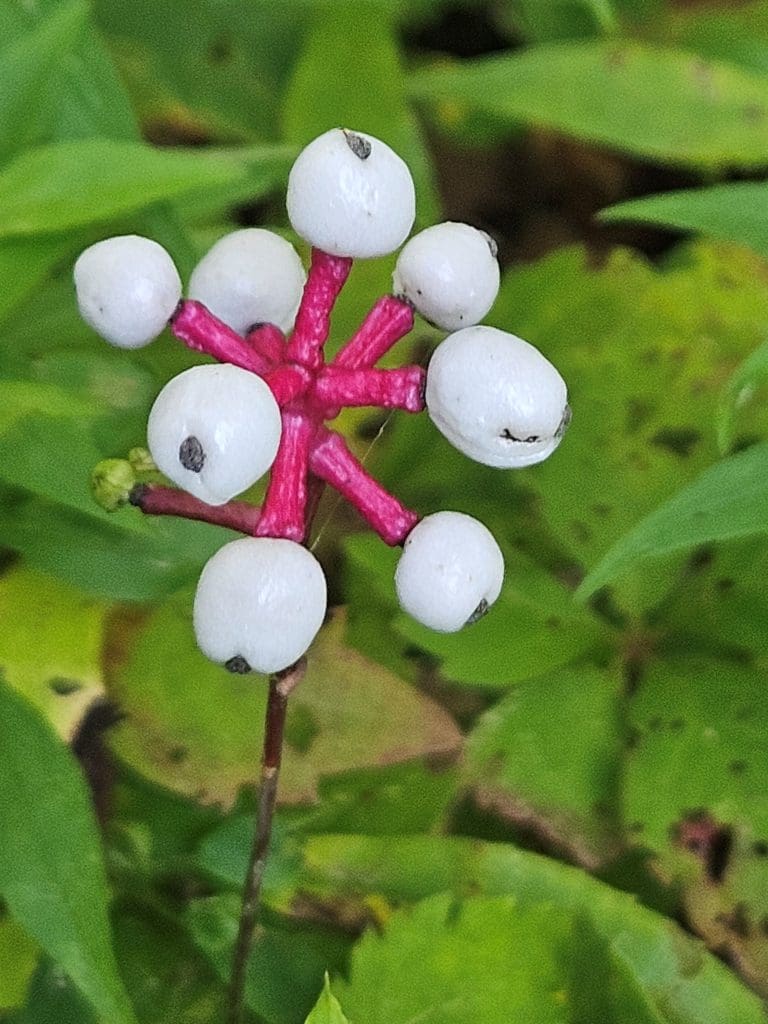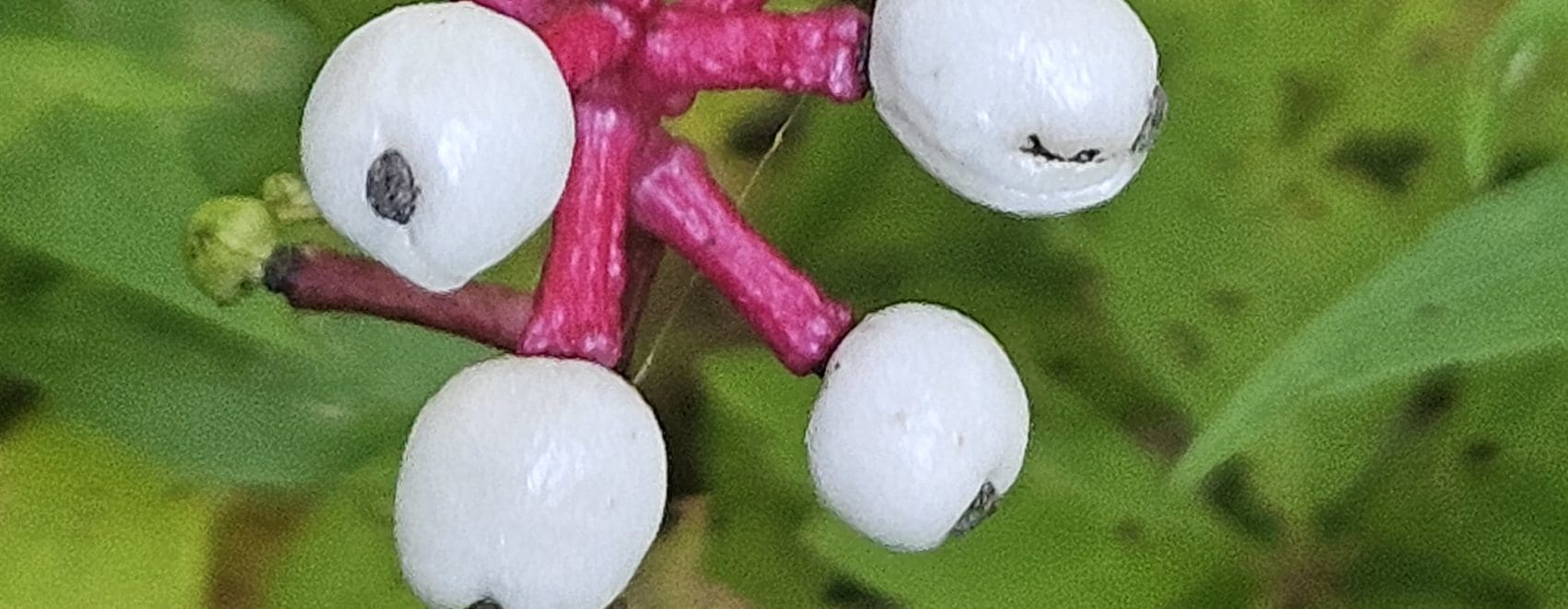Written by Kennedy Zittel, Naturalist

To celebrate the week of Halloween, let’s share a spooky story from our preserve:
I was walking through the forest doing a bird survey, enjoying the crisp fall air and the changing colors of the trees. The leaves rattled with every chilly gust of wind, as they began to cascade down to the forest floor below. The already fallen leaves crunched under my feet with every step. Crunch Crunch Crunch. The birds were quiet today, just a few white-crowned sparrows chirping in the nearby treetops and the call of a hairy woodpecker in the distance. The only other animal I saw was a squirrel, scurrying away with an acorn in its mouth. As I walked deeper into the forest, the leaves that were still hanging onto the branches shaded the understory, mushrooms grew out of fallen logs, and a crow called nearby. It felt like I was walking right into a scary movie scene. I kept walking, listening for any other birds to add to our survey list. But the forest remained quiet.
Suddenly, I felt the need to glance around, to ensure that it was really just me in the forest. That’s when I saw them… eyes just visible around the base of a tree. Now, this is when you’d likely turn to run right? Haven’t you watched a scary movie? The main character always goes TOWARD the scary noise/thing!
I crept closer, crunch crunch crunch. I peered around the base of the tree… more eyes! I smiled, perhaps it is because I am very brave, or perhaps because “staring” back at me were the eyes of one of my favorite spooky looking plants… not real eyes of course!
White Baneberry, otherwise known as Doll’s Eyes (Actaea pachypoda) is a species of flowering plant in the Buttercup Family. There are two species of baneberry that can be found growing in the understory here at Woodland Dunes along many of our trails, especially along Trillium Trail and the Dunes Segment of the Ice Age Trail. The two species are White Baneberry and Red Baneberry (A. rubra). These plants get their name from their toxic berries – “bane” meaning deadly poison. Their berries are highly toxic to humans and most mammals, birds however, are not affected by their toxins. Many bird species, such as the American Robin, Yellow-bellied Sapsucker, and Ruffed Grouse will eat the berries.
Doll’s Eyes get their name from their pea-sized white berries that have a black stigma scar in the center, making the berries look like the eyes of an old porcelain doll. Yikes! Those berries begin to ripen over the summer, lasting until the first frost. Again, they are highly toxic to many mammals (us included) but are edible for birds. Doll’s Eyes can grow to around 18-30 inches tall, with white flowers that bloom in the spring offering food for pollinators like long-tongued bees.
Though the plant does look a bit spooky, it is always a joy to see the unusual looking plant during a walk through the forest. If you keep YOUR eyes open, you never know what fun plants you may see out there!

